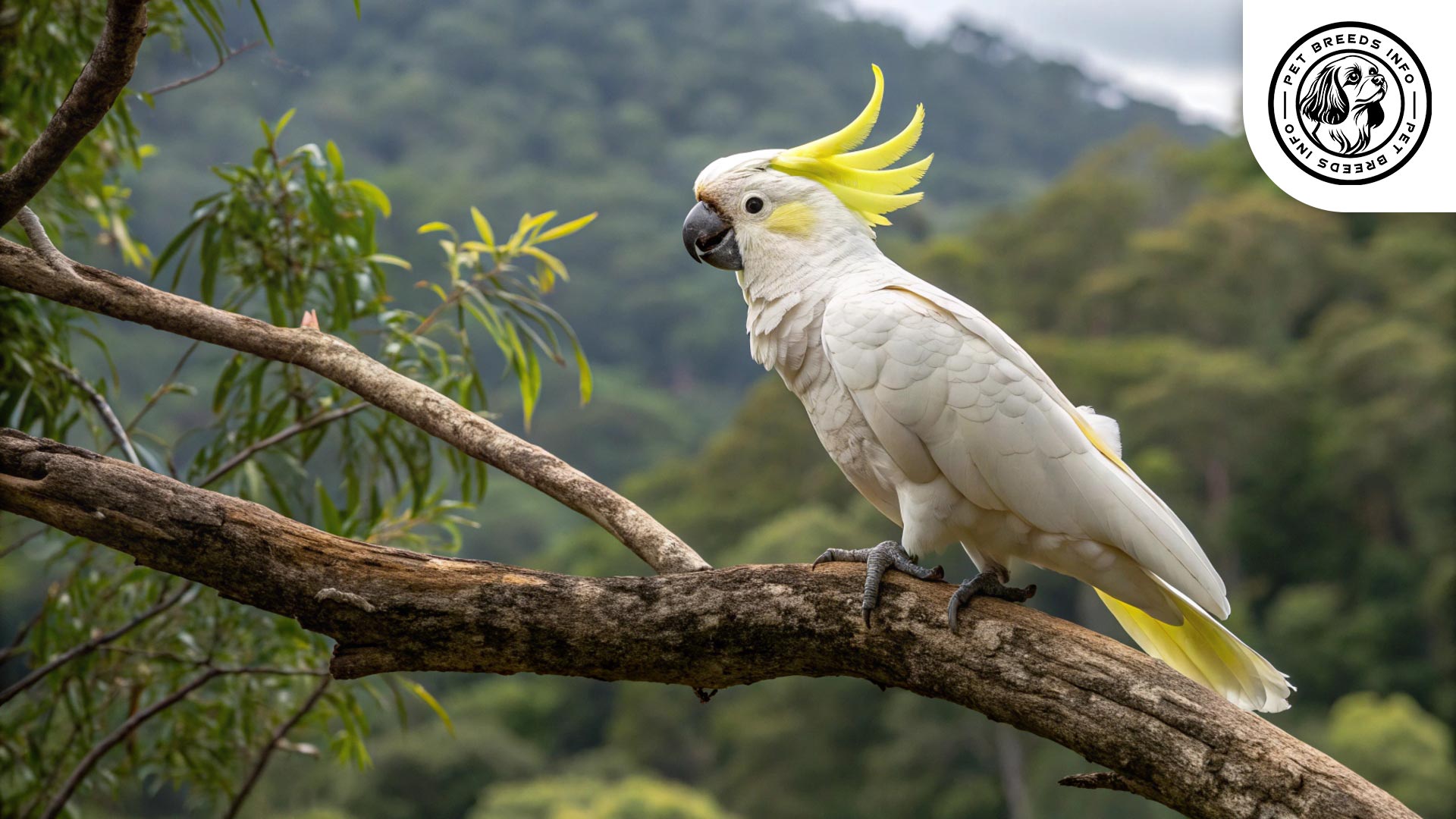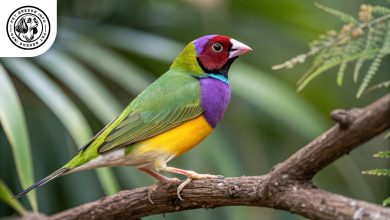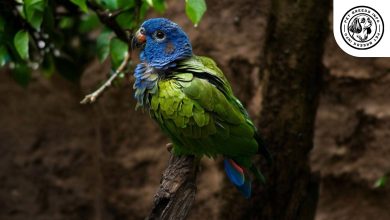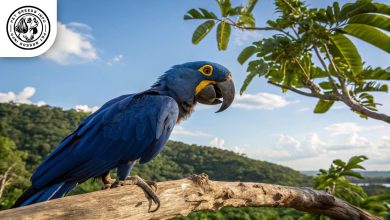Greater Sulphur-crested Cockatoo Bird: Personality, Lifespan, Food & Care
General Introduction of the Breed
The Greater Sulphur-crested Cockatoo (Cacatua galerita) is a large and highly intelligent parrot native to Australia and nearby regions, including Papua New Guinea and Indonesia. It is widely known for its striking appearance, lively personality, and strong bond with its owners.
Alternative names for this breed include the Sulphur-crested Cockatoo and simply the “Crested Cockatoo.” Historically, these birds have been admired for their beauty and intelligence, making them popular both as pets and in aviculture. They have been kept as companions for centuries and continue to be a favorite among bird enthusiasts.
Table of Contents
| Common Name | Greater Sulphur-crested Cockatoo, Sulphur-crested Cockatoo, Crested Cockatoo |
| Scientific Name | Cacatuagalerita |
| Origin | Australia, Papua New Guinea, Indonesia |
| Size | 45 to 55 cm (17 to 22 inches) in length; 800 to 1200 grams in weight |
| Lifespan | 40 to 80 years |
| Talking Ability | High; known for ability to mimic human speech and sounds |
| Colors | Predominantly white plumage with a striking yellow crest and pale yellow underwings and tail feathers |
| Noise Level | High; prone to loud squawking, especially if bored or seeking attention |
| Social Behavior | Highly social; thrives on interaction with owners and other birds; forms strong bonds; can experience separation anxiety |
Physical Characteristics
The Greater Sulphur-crested Cockatoo is a medium-to-large parrot, typically growing between 45 to 55 cm (17 to 22 inches) in length and weighing between 800 to 1200 grams. Males are generally slightly larger than females.
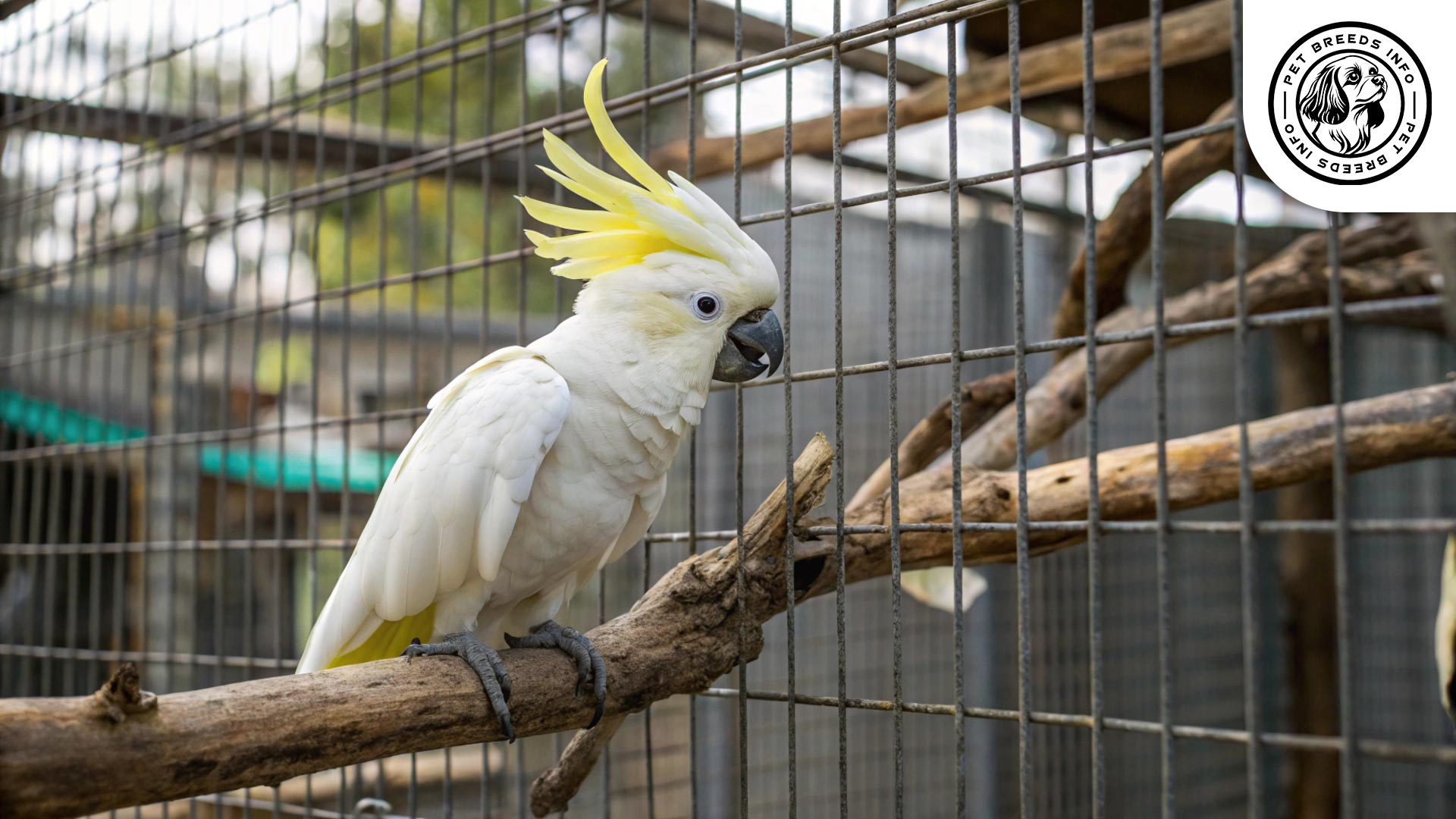
Their plumage is predominantly white, with a striking yellow crest that they raise when excited or alarmed. The underside of their wings and tail feathers also display shades of pale yellow.
They have dark brown or black eyes, with females often having a slightly redder hue around the iris. Their beak is strong, curved, and dark gray or black in color, suited for cracking nuts and seeds.
The feet are zygodactyl, meaning they have two toes pointing forward and two pointing backward, which aids in climbing and grasping objects. Their expressive crest and ability to mimic sounds make them a visually and audibly captivating species.
Read More: Short-billed Black Cockatoo
Personality and Temperament
The Greater Sulphur-crested Cockatoo is known for its high intelligence and ability to mimic human speech and sounds. They are extremely social birds, thriving on interaction with their owners and other birds.
These cockatoos have high energy levels and require significant mental and physical stimulation to prevent boredom and destructive behaviors. They form strong bonds with their owners and can become very attached, sometimes displaying separation anxiety when left alone for too long.
They are usually affectionate and enjoy playtime. While they can be good companions for families, they require constant engagement and training to prevent loud squawking and undesirable behaviors.
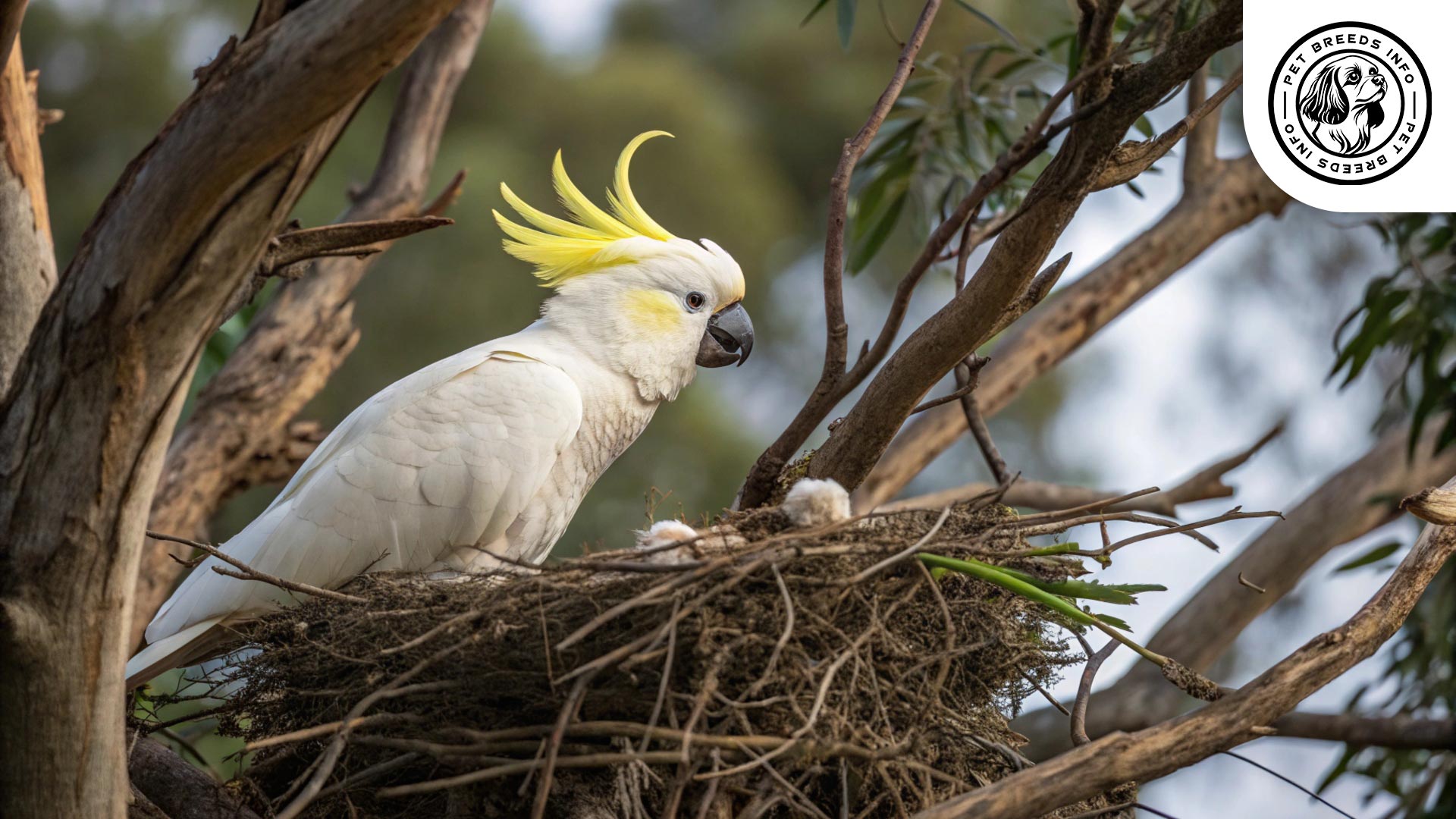
Care and Maintenance Requirements
These birds require ample space to move and exercise. A large cage and daily out-of-cage time are essential for their well-being. They enjoy climbing, chewing, and playing with toys.
They need regular grooming, including beak and nail trimming if not naturally worn down through play and chewing. Bathing or misting helps keep their feathers clean and healthy.
Since they are sensitive to environmental changes, extreme heat or cold should be avoided. Proper ventilation and avoidance of toxic fumes (such as non-stick cookware emissions) are crucial.
Diet and Nutrition
A balanced diet for the Greater Sulphur-crested Cockatoo includes high-quality pellets, fresh fruits, vegetables, seeds, and nuts in moderation.
Certain foods should be strictly avoided, including chocolate, caffeine, alcohol, avocado, and high-fat or salty processed foods.
Proper portion sizes are necessary to prevent obesity. Fresh water should always be available, and fresh produce should be cleaned before feeding.
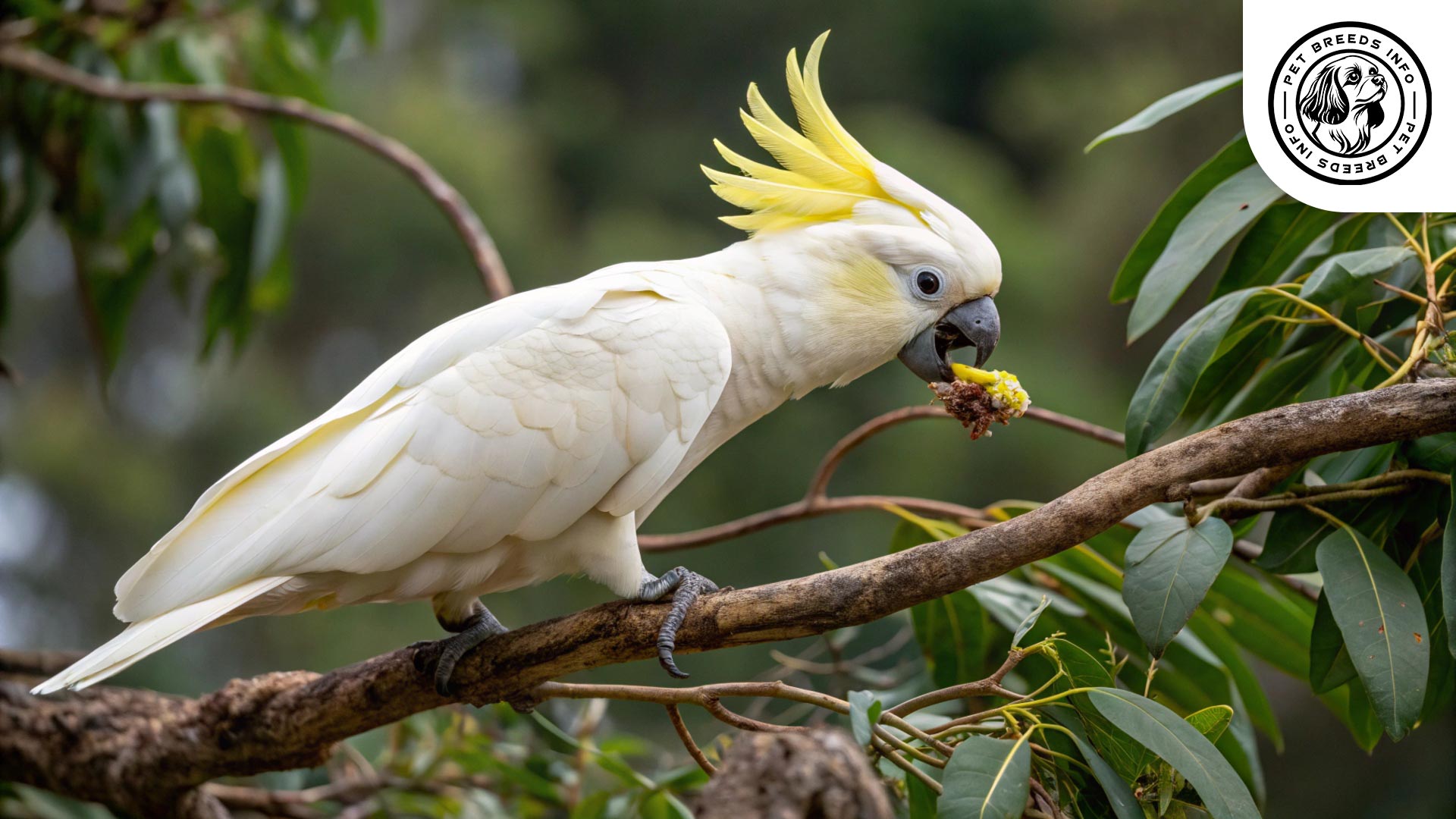
Health and Common Medical Issues
Common health issues for this breed include obesity, feather plucking due to stress, psittacine beak and feather disease (PBFD), and respiratory infections.
They have a long lifespan, often living between 40 to 80 years with proper care. This makes them a lifelong commitment for owners.
Regular veterinary check-ups and vaccinations are necessary to maintain their health. Owners should be vigilant about signs of stress or illness.
Read More: Grand Eclectus Bird
Training and Behavior Management
Greater Sulphur-crested Cockatoos are highly trainable due to their intelligence. They respond well to positive reinforcement methods, such as praise and reward-based training.
Early training and socialization are essential to prevent behavioral issues. Training should be consistent but gentle, as these birds can be sensitive.
Interactive training and teaching tricks can keep them mentally stimulated, reducing unwanted behaviors such as excessive noise or destructive chewing.
Interaction with Other Animals and Humans
These cockatoos are affectionate and can bond strongly with humans, making them excellent companions. However, their social nature requires dedicated attention.
They can get along with other birds when properly introduced but may become territorial in some cases. Supervision is recommended with other pets, especially smaller animals.
They thrive in environments where they receive daily interaction, making them better suited for dedicated owners who have time to engage with them regularly.
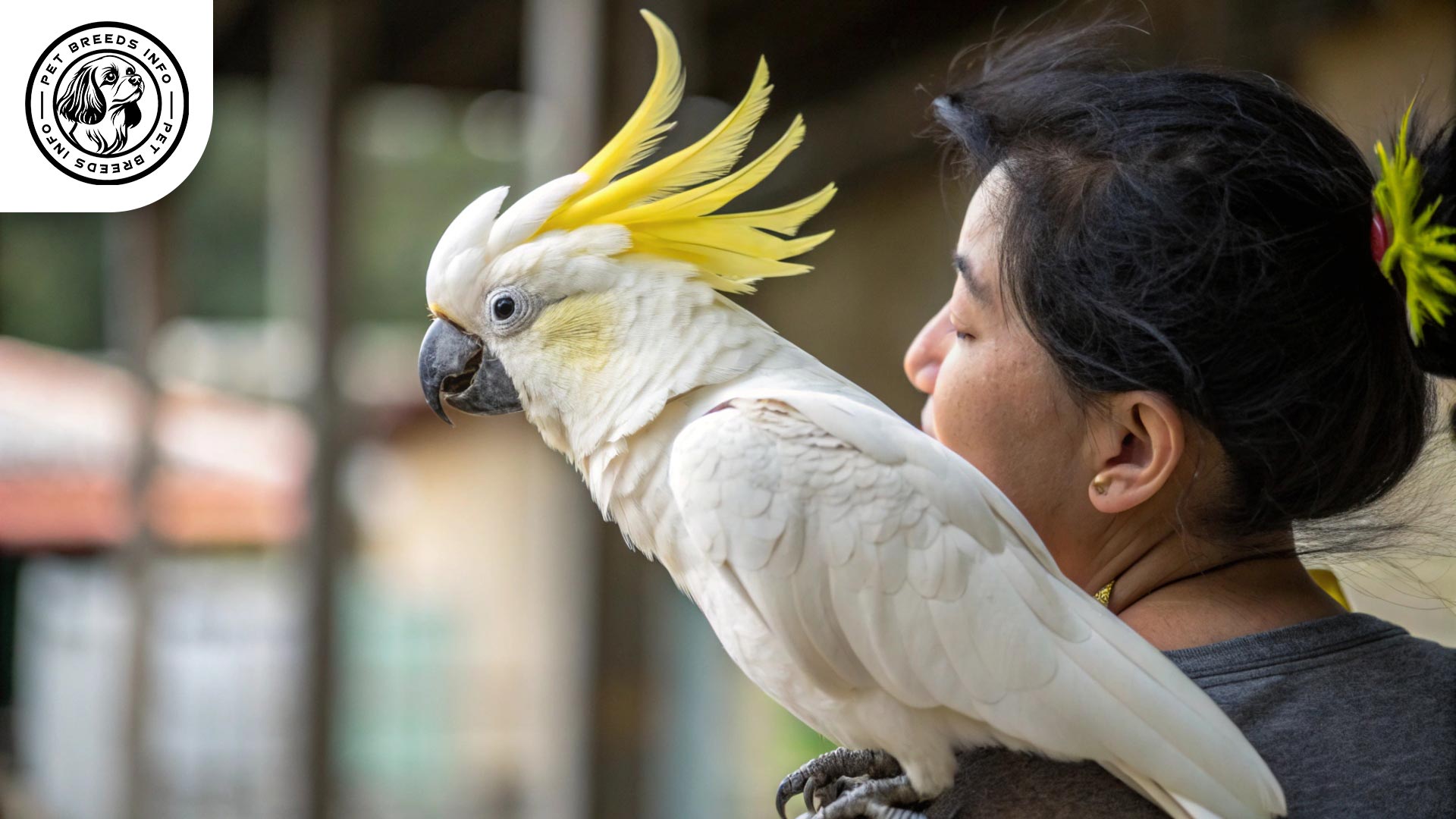
Price and Availability
The price of a Greater Sulphur-crested Cockatoo ranges from $2,000 to $4,000 depending on the breeder, location, and the bird’s age.
Potential buyers should ensure they are purchasing from reputable breeders who provide health records and allow visits to check living conditions. Alternatively, adoption from rescue centers is a responsible option, as many cockatoos end up in shelters due to their high demands.
Conclusion and Final Thoughts
The Greater Sulphur-crested Cockatoo is best suited for experienced bird owners who can dedicate time to socialization and training. They are highly affectionate, intelligent, and require an engaging environment.
Due to their lifespan and care needs, potential owners must be prepared for long-term commitment. They make excellent companions for those who enjoy interactive pets but may not be ideal for first-time bird owners or individuals with limited time.
If you are looking for an intelligent, playful, and affectionate bird, and you have the time to invest in its care, the Greater Sulphur-crested Cockatoo can be a rewarding and lifelong companion.
Read More: Albino Lovebird
FAQ
How big do Greater Sulphur-crested Cockatoos get?
They typically grow to be 45 to 55 cm (17 to 22 inches) long and weigh between 800 to 1200 grams.
Are Greater Sulphur-crested Cockatoos good talkers?
Yes, they are known for their high intelligence and ability to mimic human speech and various sounds.
What is the typical lifespan of a Greater Sulphur-crested Cockatoo?
With proper care, they can live a long time, often between 40 to 80 years.
Do Greater Sulphur-crested Cockatoos need a lot of attention?
Yes, they are very social birds that require significant interaction, mental stimulation, and can suffer from separation anxiety if left alone for too long.
What are the main colors of a Greater Sulphur-crested Cockatoo?
Their plumage is mainly white with a distinctive yellow crest and pale yellow on the underside of their wings and tail.
